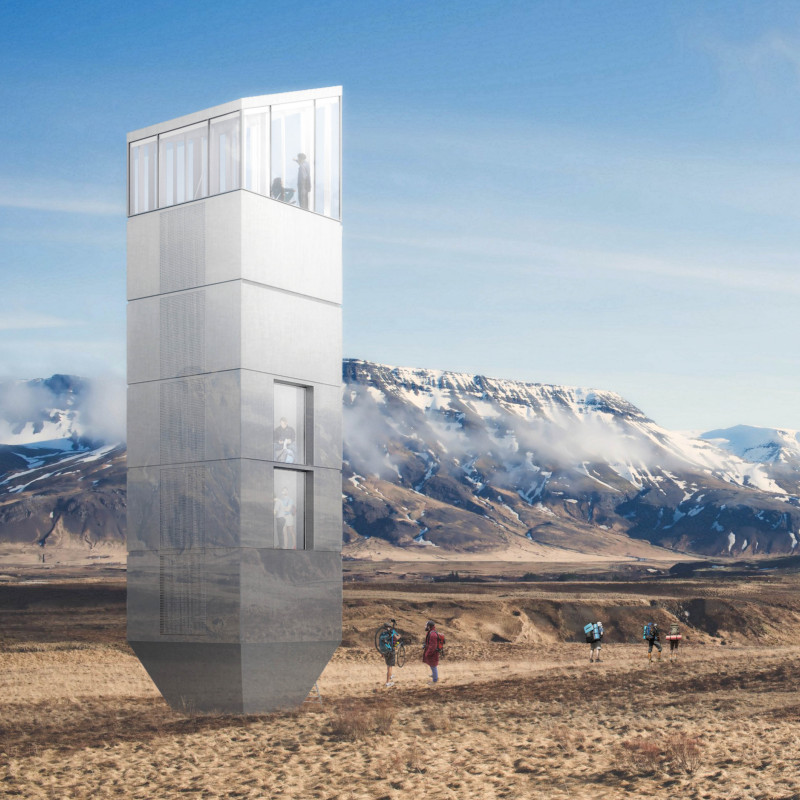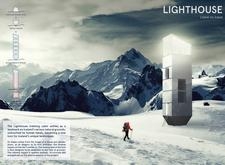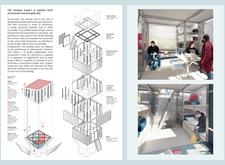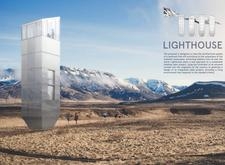5 key facts about this project
### Project Overview
Located in the rugged landscapes of Iceland, the Lighthouse trekking cabin is designed as a sustainable and minimalistic structure aimed at providing accommodation for trekkers. The project emphasizes ecological harmony and responds to the unique geographical challenges of the area by targeting a compact footprint that maximizes habitable volume.
### Spatial Configuration
The cabin features a modular design consisting of six vertical stories, accommodating ten guests. Each floor is thoughtfully organized to fulfill specific functions, seamlessly integrating communal spaces with private retreats. This multi-layered spatial arrangement allows for both solitude and interaction, facilitating a versatile living experience tailored to the needs of its occupants. The rhythmic organization around structural columns further enhances the functionality of the space, promoting an efficient and user-friendly environment.
### Material and Sustainability Strategy
The choice of materials reflects a commitment to both structural integrity and ecological responsibility. The main structure incorporates aluminum for its lightweight and recyclable properties, while concrete serves as a stable base for the upper modular sections. Generous use of glass enhances the connection between the interior and the surrounding landscapes, providing visual continuity. Sustainable insulation materials are employed to optimize energy efficiency.
In terms of sustainability, the cabin integrates renewable energy sources, including a rapeseed oil co-generator and photovoltaic solar panels, supporting a self-sufficient energy system. Water management techniques, such as rainwater harvesting and an efficient purification system, are designed to minimize external dependency. Additionally, the project anticipates waste recycling solutions for both organic materials and wastewater, showcasing a holistic approach to environmental stewardship. The adaptable structure can also adjust to various terrains, ensuring stability while maintaining its minimal ecological footprint.






















































